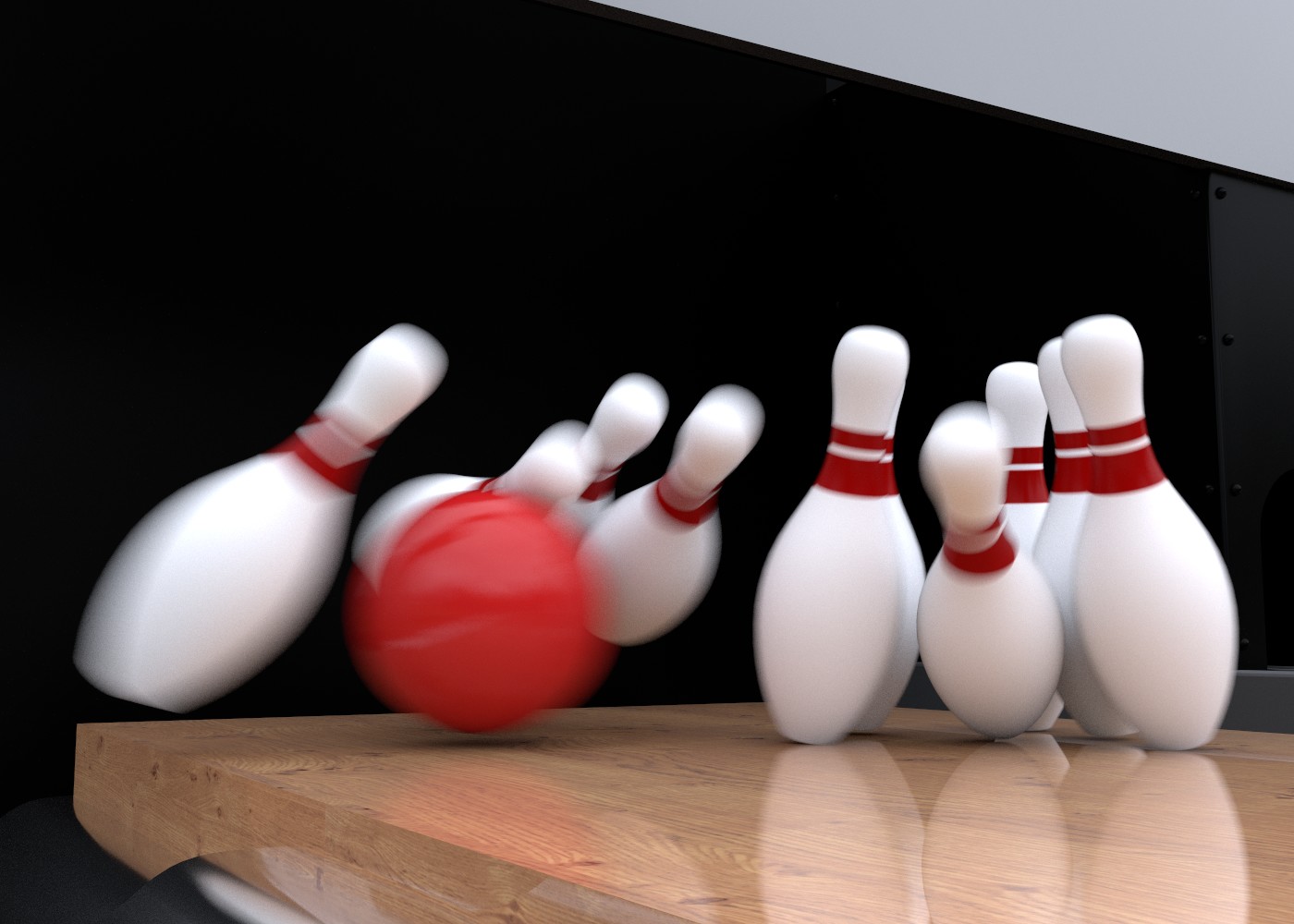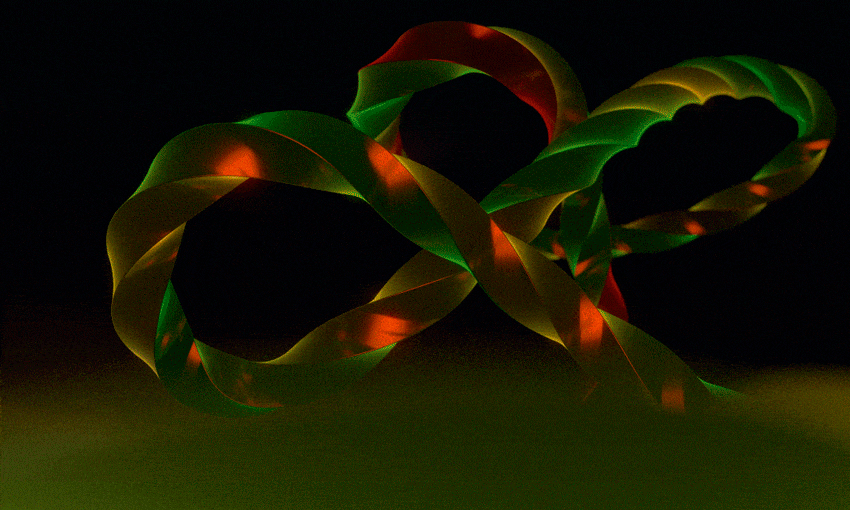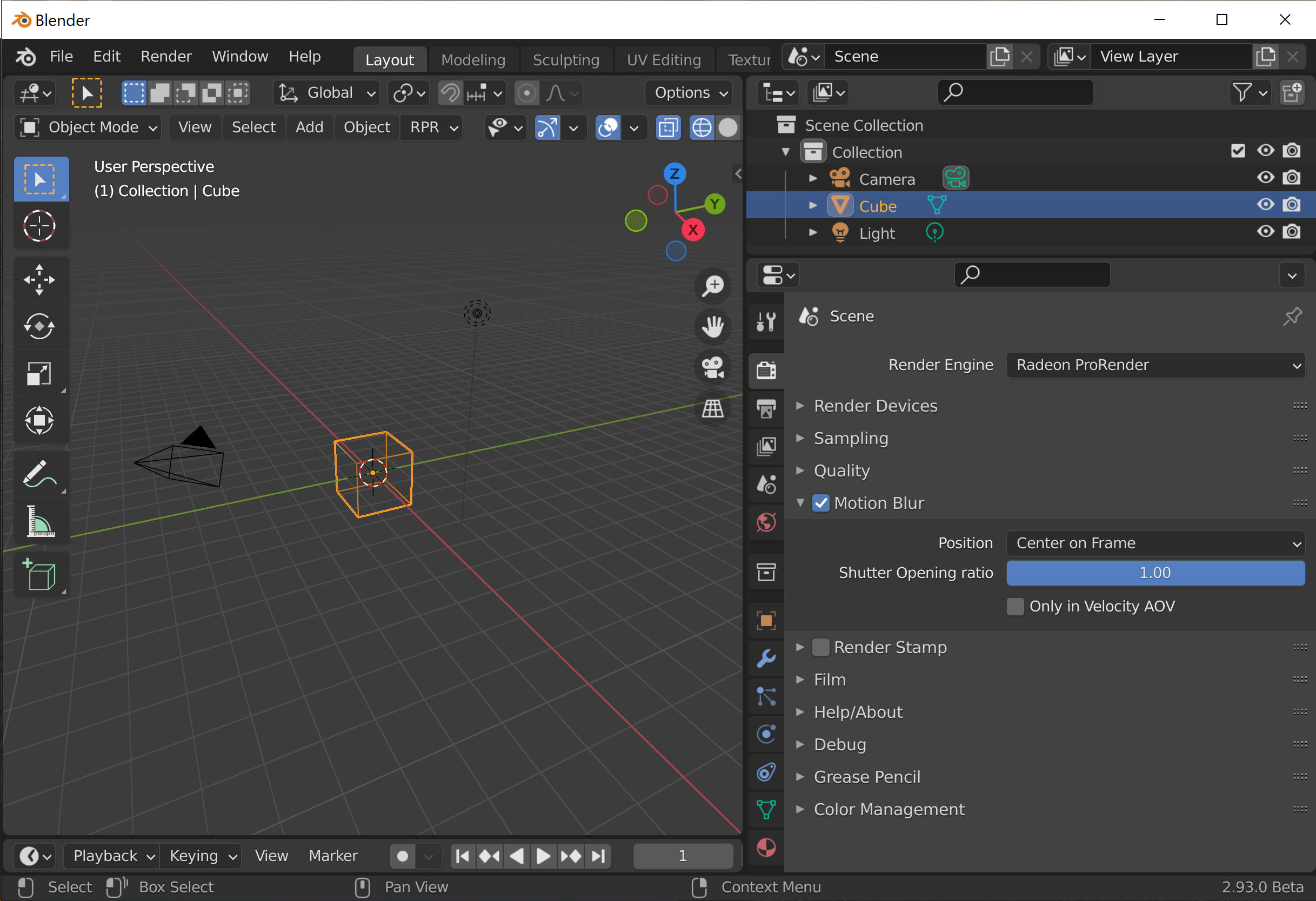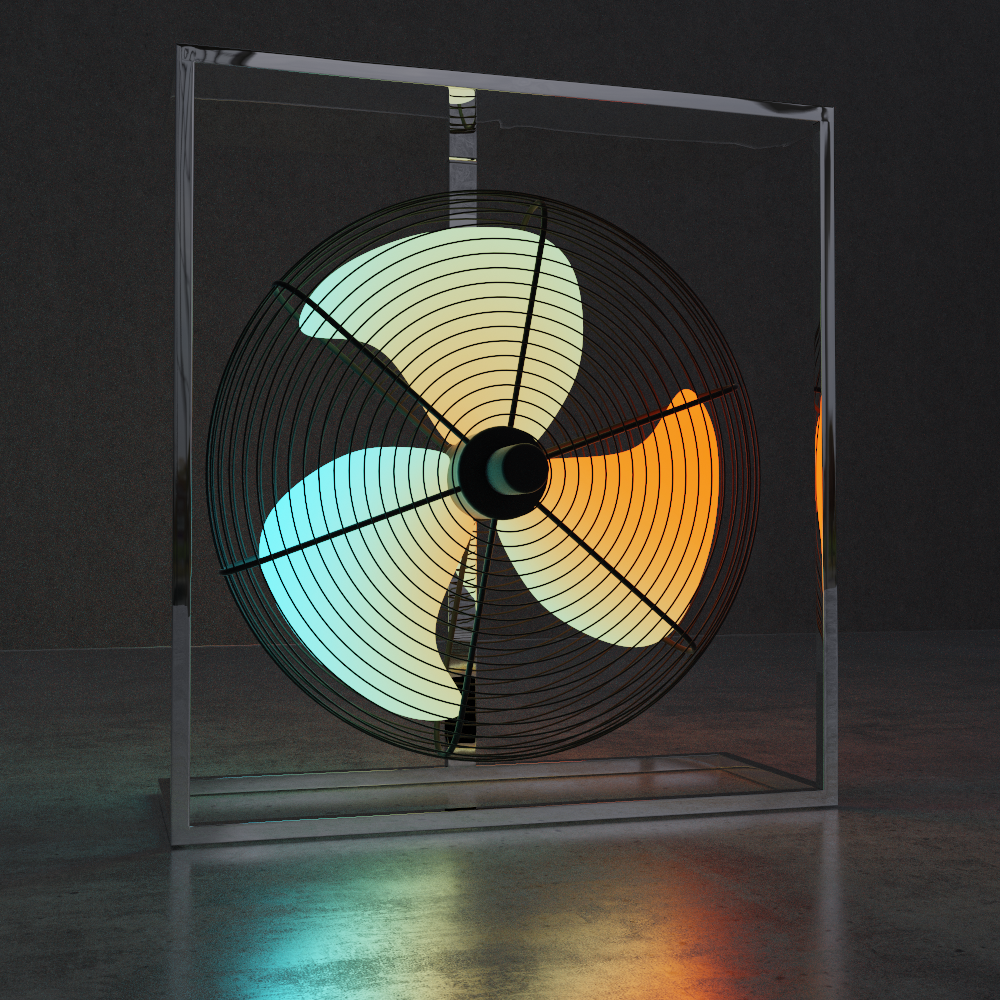Motion Blur
In photography, motion blur is an effect caused by objects moving during the camera exposure time — either because of high objects’ or camera speed, or long exposure time. This leads to a “smearing” effect of the object in the image.
AMD Radeon ProRender allows you to simulate the motion blur effect in animations. By default, an animated scene is rendered as a sequence of still images that do not convey the sense of speed for rapidly moving objects. In animation renders, this can appear jumpy since objects move between frames. With motion blur, objects appear smeared in the direction of motion, adding to more realistic appearance, especially when playing an animation.

Motion blur applies to objects’ transformation and deformation animations, camera animations, as well as particle animations. Motion blur is supported for static and skinned mesh animation (deformation motion blur). Deformation motion blur gives accurate motion blur to objects which are being deformed, for example, a flag flapping in the wind or a ball squashing.

In AMD Radeon ProRender, motion blur can be enabled on a per-scene, per-camera or per-object basis. When enabled at the scene level, motion blur applies to all objects and all cameras in the scene. You can also enable motion blur per-camera (for a moving camera) or per-object. The latter option might be useful if some objects in the scene only move slightly or stay still, giving no sense of motion, while others are moving fast.
Enabling Motion Blur
To access motion blur settings:
Make sure that AMD Radeon ProRender is set as the active render engine in Blender.
For details, see Switching to Radeon ProRender for Blender.
In the Blender Properties editor, switch to the Render tab.
Select the Motion Blur option to enable motion blur for all cameras and objects in the scene. Choose the intensity of the blur.
Set motion blur for cameras and objects:
To control the motion blur for an object or a camera, select it in the scene, open the object or camera properties and locate the Motion Blur option in RPR Settings.
To control motion blur for skinned mesh animation, select an object in the scene, open its properties and use the Deformation Blur option in RPR Settings.

The intensity of motion blur depends on the objects’ speed, shutter opening ratio and position.
Shutter Opening Ratio
The Shutter Opening Ratio parameter controls how long the shutter of the virtual camera remains open to capture the motion.
Greater values accentuate motion blur and produce longer blur trails simulating greater speed, while smaller values increase the image sharpness and make the effect less apparent. Setting the value to 0 produces no blur and can be used to freeze an instant in time with no trace of motion.

No motion blur |

Shutter Opening Ratio: 5 |

Shutter Opening Ratio: 20 |
Position
The Position parameter controls the offset for the shutter’s time interval. It defines at what point the shutter opens in relation to the current frame.
Start of frame defines that shutter is starting to open at the current frame.
Center of frame defines that shutter is fully opened at the current frame.
End of frame defines that shutter is fully closed at the current frame.
Only in Velocity AOV
Controls how motion blur affects render passes. With this option enabled, information about motion blur will be included in the Velocity pass only, and will not be presented in other passes.
Notes
Consider a few notes regarding motion blur:
Motion blur is calculated in the final render only, and not available when rendered in the viewport.
Greater shutter opening ratio values produce more blur but result in more noise. You might need to increase the number of samples to reduce the amount of noise in the blurred regions.